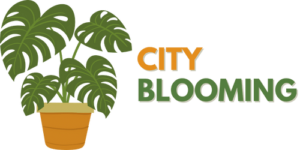The Best Guide To City Blooming
The Best Guide To City Blooming
Blog Article
City Blooming Fundamentals Explained
Table of ContentsAll about City BloomingRumored Buzz on City Blooming7 Simple Techniques For City BloomingThe smart Trick of City Blooming That Nobody is Talking AboutSome Ideas on City Blooming You Need To Know
Fascinated in expanding food available in the City of Chicago? Thinking of beginning a neighborhood garden? Changes to the Chicago Zoning Statute enable agricultural uses like area gardens and urban farms in several parts of the city. Below is a list of regularly asked questions concerning the regulations and guidelines that growers ought to consider when intending a city agriculture task.
The zoning change does not change any kind of other codes managing composting, building permits, buying or renting City possessed residential or commercial property, organization licenses or environmental contamination. There are existing codes that regulate these concerns and they continue to be completely impact and might be applicable to your job. Community gardens are generally had or handled by public entities, public companies or community-based companies and kept by volunteers.
Urban farms grow food that is meant to be marketed, either on a not-for-profit or for-profit basis. As a result of their commercial purpose, urban farms require a service license. Yes. A neighborhood garden is allowed to market excess generate that was expanded on website if the sales are accessory or subordinate to the garden's primary function described above.
The Basic Principles Of City Blooming
Composting is enabled but just for plant material that is produced and utilized on site. The amount of garden compost material can not go beyond 25 cubic lawns at any type of provided time according to the criteria in 7-28-715 of the City's Municipal Code. Yes. Since the soil at the majority of brand-new yard websites requires amending, garden compost, soil, timber chips, or other materials can be gotten to build or boost the expanding room - urban gardening.

If a structure authorization is needed after that the hoophouse will be taken into consideration an accessory structure. You can learn even more regarding the structure permit demands by getting in touch with the Division of Buildings. The 25,000-square-foot dimension restriction is meant to protect against a single community garden from dominating an offered block or interfering with the block's existing household or industrial personality.
The restriction does not put on gardens found in Public Open Area (POS) districts. Can there be more than one community yard that is 25,000 square feet on a single block? Yes. The size limit applies to private gardens, not to individual blocks. No. Fence is not needed, nevertheless, gardens that have large parking lot might be needed to set up fencing or various other landscape design features.
Examine This Report on City Blooming
B1 & B2 areas call for that all business use tasks be conducted indoors. R districts restrict commercial task. The policies mirror the function and intent of the Zoning Code. Is fence required for metropolitan ranches? Yes. Fences might be needed, along with landscape design and testing, for particular parking lot and exterior work or check this storage areas relying on location and the certain task occurring.
Yes. Urban ranches require structure authorizations and zoning authorizations prior to building. Various other forms of city review might be required depending on details frameworks, activities, size, landscaping, licensing, public heath and stormwater administration issues. Most of these demands are recognized in the project design or allowing process, however, the candidate might be responsible to individually determine particular licenses or allows that might be needed.
The Department of Service Matters and Customer Defense can help figure out the certain kind of business license that's required. Off street car parking is needed for most commercial jobs in Chicago. The required number of car parking areas is based on the number of staff members functioning on site and not the square video footage of the growing area.
City Blooming Things To Know Before You Buy

Yes. An urban ranch can sell compost material generated on site, however, the operation should comply with the laws in 7-28-715 of the Chicago Municipal Code. Yes. Aquaponic systems are permitted inside on city farms in numerous zoning areas. Nevertheless, a zoning testimonial and structure authorization is required in order to set up frameworks or systems and a business license is needed as defined over.
Up to 5 hives or nests of honey bees may be maintained as an accessory usage. However, beekeepers must register with the Illinois Division of Agriculture. For additional information regarding the suggested zoning amendment you might contact the Division of Housing and Economic Development, Bureau of Preparation and Zoning at 312.744.8563.
, which takes place in rural areas at the edge of residential areas.
The Ultimate Guide To City Blooming
, who look for to develop social networks established on a shared ethos of nature and community holism. These networks can create by means of official institutional assistance, becoming integrated right into local town planning as a "transition town" activity for lasting metropolitan development.
The more direct access to fresh veggie, fruit, and meat items that may be realised via city farming can improve food safety and food security while decreasing food miles, leading to lower greenhouse gas exhausts, consequently adding to environment adjustment reduction. Some of the first evidence of urban farming comes from Mesopotamia.
Report this page